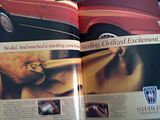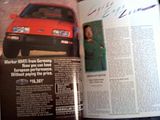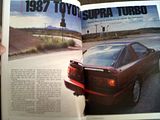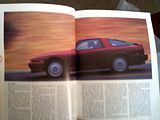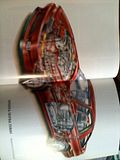I'm not big on posting in older threads, but this sub-forum isnt exactly lively.
There are a few advantages the MkIII has over the MkIV, but most are largely subjective. Let's look at
why the MkIII is heavier for instance.
The MkIII is a bit of a departure from the MkII and MkIV, in that it is a grand tourer and not a "sports" car really. The MkII is much much lighter, looks similar, and I'm pretty sure has a suspension designed by Lotus (MacPherson? TBH I know little of MkIIs). It also came with P-type and L-type options of geared slightly more towards performance or towards luxury, which I really wish more cars had. Since the MkIII just combined the two, the performance stuff also came with the added weight of luxury options--literally.
The MkIII was a huge success. As I recall, there were more sold in 89 than 93-98...there were more in 88 than 89, 87 than 88, and 86 was a HUGE seller, though I'm wondering how much of that was the 86 MkII. It had different goals too. It was over $10k less than the exotic MkIV. It came with hood struts and a full size spare (MkIV has a stick and a skinny). The seats are much heavier with power options etc, and it was definitely built for long cruises (not that the MkIV isnt). The hood on a MkIII is also quite heavy (48-50 lbs IIRC), as random other parts of the car usually are.
As far as aerodynamics...well a pre89 turbo is actually more aerodynamic than a MkIV with a wing IIRC. Pre89 coefficients of drag are .32 for pre89 turbo (spoiler is the kicker), .33 for 89+, and .34 for 89+ turbo. I believe the wingless MkIV is also .32 and with the wing it's .33.
The MkIV can be viewed as a technical marvel in the same way as the MkIII. The MkIII turbo is the first Toyota without a distributor in America. First turbo car from Toyota here too as well IIRC. You also had a full dash of real, working gauges (boost gauge aside), an electronically adjustable suspension (TEMS), I believe the N/As had TVIS or ACIS or whatever they pawned it off as (not a bit N/A fan if you couldnt tell

), the sawblades for brake ventilation (just like pop-ups,
so cool in the 80s!), and who can forget the super-restrictive exhaust with 2 cats, 2 mufflers, a resonator, and a wall built in so wastegate gasses cant go anywhere?! You still had a ridiculously (read: unnecessarily) quiet exhaust, and dont forget that Toyota even said it was okay to use 87 octane in your turbo car if you
had to. *Gasp!* I know! Do consider that you had an engine running 8.4:1 compression and not even 7 psi from the factory..not exactly a big deal unless you like making terrible decisions.
When it comes down to it, there's still plenty of similarities between the two, whether the MkIV guys like to admit it or not. Both the 2J/7M N/A and turbo blocks are essentially the same really, the difference being the pistons, the N/As have a distributor whereas the turbos are distributor-less. The non-VVTi 2Js all share an intake cam IIRC, regardless of aspiration; the 7Ms all share exhaust cams. The turbos have oil squirters, the N/As dont. All turbos came with an LSD, a small badge/trim difference, and a wing. Both are 3.0 DOHC turbos, one of which with the lineage starting around the 2000GT, which also was the fastest Japanese car ever made (the Turbo A in 88, before the R32 in 89). Both are super awesome flagship cars of their time that cant really be replicated correctly nowadays. Both also have later version taillights that are simply a 'must-have' for all owners. Both N/As had W58s and similar automatic trannies. Hell, both used MkIII sawblades in rallies!
I'm sure there's plenty I'm missing, and maybe some of it is wrong, but there you have it.




